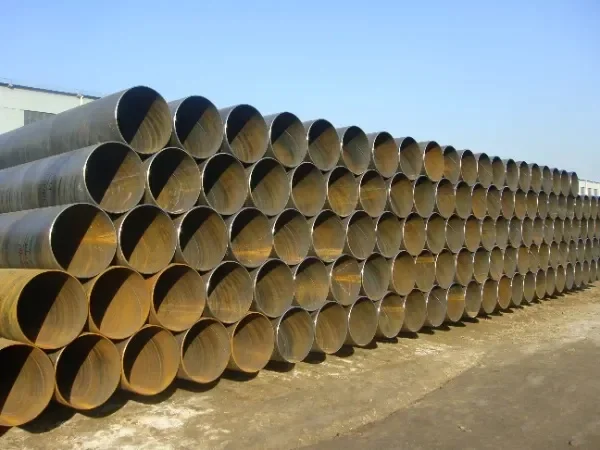How are welded pipes produced?
The production of welded pipes is a complex process that involves several stages. The process begins with the selection of high-quality raw materials, which are then processed and transformed into pipes of various sizes and shapes. In this article, we will explore the various stages involved in the production of welded pipes.
Stage 1: Raw Material Selection
The first stage in the production of welded pipes is the selection of raw materials. The raw materials used in the production of welded pipes are typically steel coils or sheets. These materials are carefully selected based on their quality, strength, and durability. The steel coils or sheets are then transported to the manufacturing facility where they will be processed.

Stage 2: Coil Preparation
Once the raw materials have been selected, the next stage is coil preparation. The steel coils are uncoiled and flattened using a machine called a decoiler. The flattened steel is then passed through a series of rollers that shape the steel into the desired size and shape. The edges of the steel are then trimmed to ensure that they are straight and even.
Stage 3: Welding
The next stage in the production of welded pipes is welding. The flattened steel is passed through a welding machine where it is welded together to form a continuous pipe. The welding process involves heating the edges of the steel to a high temperature and then pressing them together. The welded pipe is then cooled and inspected to ensure that it meets the required quality standards.
Stage 4: Sizing and Shaping
Once the welded pipe has been formed, it is passed through a series of sizing and shaping machines. These machines are used to shape the pipe into the desired size and shape. The pipe is also inspected at this stage to ensure that it meets the required quality standards.
Stage 5: Finishing
The final stage in the production of welded pipes is finishing. The pipe is cleaned and coated with a protective layer to prevent corrosion. The pipe is then cut to the desired length and packaged for shipping.
In conclusion, the production of welded pipes is a complex process that involves several stages. The process begins with the selection of high-quality raw materials and ends with the finishing of the pipe. Each stage of the process is critical to ensuring that the final product meets the required quality standards.
Related news of welded pipe
The difference between precision seamless steel pipe and ordinary seamless steel pipe
Characteristics of welded steel pipe and seamless steel pipe
Differences between Seamless and Welded Pipes
How to choose seamless steel pipe or welded steel pipe?
Cost of Seamless Steel vs Welded Pipe
Purchasing Practices for Seamless Steel and Welded Pipes
The difference between welded steel pipe and seamless steel pipe






